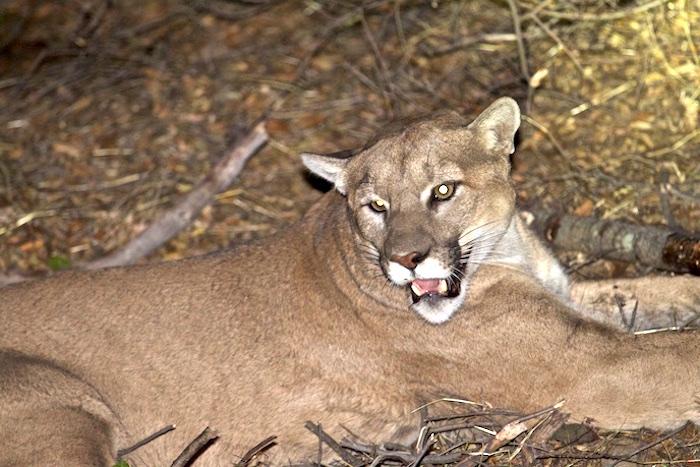
Is P-45, captured and collared last month, the third male mountain lion roaming Santa Monica Mountains NRA?/NPS
How many male mountain lions are roaming Santa Monica Mountains National Recreation Area in California? That's the question wildlife biologists hope to answer after recently capturing an adult male.
The captured lion, now known as P-45 for tracking purposes, is three-to-four years old, according to biologists.
“During the course of our study, we’ve only been aware of one or two adult males at any given time in the Santa Monica Mountains.” said Jeff Sikich, biologist for the National Park Service. “We’re very interested to learn whether there are now three adult males or whether P-45 successfully challenged one of his competitors.”
Because the local population is hemmed in by freeways and male mountain lions are extremely territorial, researchers believe the Santa Monica Mountains can only support one or two adult males.
P-27, estimated to be eight years old, is a male that spends the majority of his time on the eastern end of the mountains. The fate of P-12, an adult male researchers first collared in 2008, is unclear. Though his radio collar stopped working a few years ago, he was photographed by a remote camera as recently as this March. He has also fathered several litters of kittens in recent years.
P-45 weighed 150 pounds at his capture, which is more than any other mountain lion during the study, with the exception of P-1, who also weighed 150 pounds. He was captured in the central portion of the Santa Monica Mountains and outfitted with a GPS collar.
Since Sikich began tracking P-45 on November 21, he has spent most of his time on the western end of the Santa Monica Mountains, sticking to some of the most undeveloped areas.
As a previously unknown animal, it is hoped that DNA tests will shed light on how P-45 ended up in the Santa Monica Mountains and how he might be related to other animals in the study.
The National Park Service began studying mountain lions in and around the Santa Monica Mountains in 2002. The purpose of the study is to determine how they survive in a highly fragmented urban environment.
Scientists are currently tracking 11 animals in the region.


 Support Essential Coverage of Essential Places
Support Essential Coverage of Essential Places







Comments
this cat has killed over 30 animals in a very small radius since December 2015. It's not killing and eating the kills - it's just killing them and leaving the carcasses. Sheep, goats, alpacas, dogs, miniature horses, calfs.....it's a menace and I hope those aren't it's kittens that they found..don't need those genes represented anymore.
How do you know it's "this" cat? Has there been verification? Packs of dogs can do the same thing and commonly do.